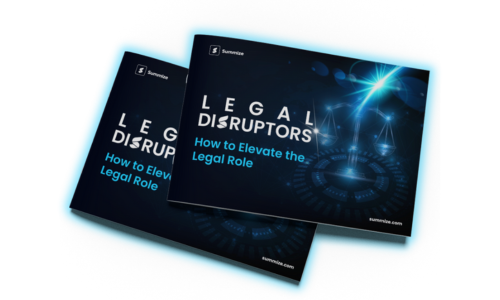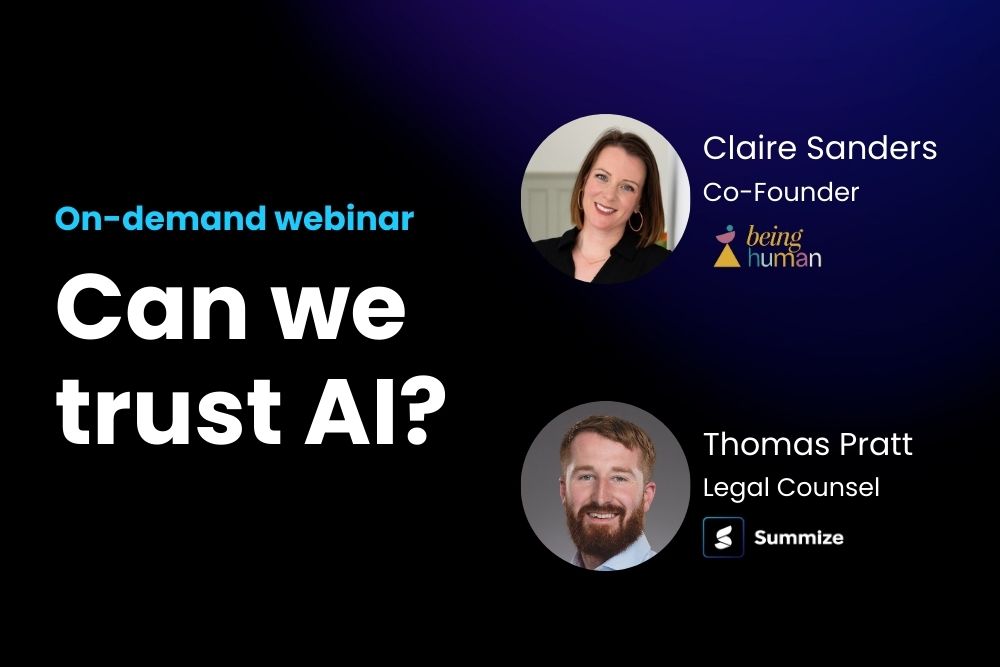Contract management trends in 2024: AI, ecosystems & more
Explore the trends that are expected to make the contract lifecycle management process faster, simpler and more efficient for legal teams in 2024.
January 15, 2024
December 19, 2025
In many industries, the pandemic changed how businesses interact with their contracts, and we saw many existing trends accelerate, creating a new playing field for contract management. But as organizations continue to digitalizse their processes, it’s clear that 2023 wasn’t the year of enhanced innovation.
Of course, we saw changes in the market, legal events have been dominated by AI talks and enhanced offerings. But if anything, 2024 is a clean slate. The rapid rise in AI adoption has opened up a new path for contract management, with many Contract Lifecycle Management (CLM) vendors altering their product roadmap to develop and release more advanced AI features.
Similarly, the outlook from decision-makers on how best to digitalize their processes and deliver a meaningful ROI, combined with the global recession is influencing how vendors approach CLM. Changing product roadmaps, shifting user priorities and the adoption of AI will bring major changes to the CLM market in 2024.
Word still comes out on top
Lawyers love Microsoft Word, there’s no denying that! CLM vendors have tried to break this habit by pushing legal teams to generate, review and negotiate contracts in their native word editor (with little success). But a lap of any exhibition hall in the last 12 months confirms that legal tech providers have realized this. From one vendor to the next, nearly all are offering some form of AI Assistant or the ability to work in Word.
However legal teams are one of the last departments to undergo digital transformation. They’re risk averse, it comes with the job, and they’ve been working this way for as long as they can remember. So, naturally, when a vendor has come along with a solution that requires a change in working habits, they’ve resisted staying loyal to Microsoft Office.
Although many CLM vendors do support this way of working to an extent, typically through integrations, the end-user experience is clunky and still doesn’t mirror that of Word and requires the user to aggressively prompt the system to complete mundane tasks such as contract reviews. Plus, it often sits outside of the organization's ecosystem, meaning it’s inaccessible to the wider business, which doesn’t solve the problem of legal teams being overwhelmed with low-value tasks from the wider business.
AI makes headway
In just a few months AI has had a massive impact on the legal industry. As an industry that was once merely a follower of AI, the legal industry is finding itself at the heart of the latest AI enhancements.
Vendors have responded in a variety of ways. Many are seeking to enhance and improve their integrations with the most common business tools, most notably Word and Salesforce. And many other players are disregarding pre-signature features altogether because they are unsure how to effectively approach them.
The result? Senior stakeholders are flocking to amend their product roadmaps. Many are tearing out planned features and enhancements to pre-signature processes and replacing them with AI enhancements. Some will enhance their integration features to entice those looking to use Word and other existing tools, and others are pivoting to be seen as a contract automation tool rather than the full suite offering.
Authoring and negotiating are the crux of CLM. While it may not be as important for a smaller vendor or non-CLM point solution to include them, suite providers and those that aspire to cover the most common source-to-pay pain points should consider that even if legal users may prefer Word and email combinations. Strong integrations with Word with enough advanced features that represent a true addition of value, such as AI-enabled risk detection or automated markup, should tempt even the lawyers most loyal to Word.
The adoption pyramid
Procurement presents a major challenge for AI adoption. It’s burst onto the scenes at a time when most businesses are mid-way through their financial year. With budgets allocated and dwindling, many are putting are instead putting a strategy In place to roll out AI instead.
As with any tech, AI requires a level of training. The rate of acceleration in enhancements means we have to find a balance. Some believe that in the long run, AI will be so advanced that it can act as a direct replacement for CLM tools. Although it’s possible, it’s overestimating the power of AI and underestimating the complexity of CLM.
AI is everywhere, this was clear at a recent event. Three floors were lined with vendors as far as the eye could see. All offering the latest AI enhancements with strengthened integrations,
However, many legal teams have approached AI with caution. The anxiety that the industry has often stems from concerns that it will replace their team – a concern that has been raised across the industry. AI is not designed to replace humans in the workplace. Instead, it augments employee’s capabilities and removes manual or time-consuming work.
A talk by on AI Evolution at Legal Week discussed the importance of best practices for utilizing AI in the legal field. AI is not a lawyer, nor should it be used as a direct replacement for a lawyer on legal tasks. Although advanced, lawyers hold years of experience, expertise and specialist knowledge and training, something that an AI bot doesn’t. Instead, for organizations to maximize the benefits of their AI offerings, humans and machines must work in tandem.
It's positioned itself as a suitable tool to manage routine legal tasks that take up countless hours and resources, such as reviewing a new contract or answering questions about an agreement. With considerable coverage in the media, business leaders are now looking to implement these tools to unlock more efficient and streamlined legal processes, particularly across the contract lifecycle.
This is already proven, with certain areas of CLM being greatly impacted by AI, such as contract negotiation or authoring. By utilizing plug-ins and integrations, vendors have been able to support a lawyer's existing way of working with AI.
The opportunity
Legal teams have plenty of choice when it comes to CLMs that utilize AI, and many will never fully rely on AI to complete tasks. AI will always be seen as an assistant to a lawyer, a tool that supplements the work of a lawyer and compliments their time. But vendors shouldn’t overlook this, nor should they shy away from offering new AI features in their CLM. Because those that do will only increase the gap left in the market.
Many see the combination of CLM and AI as a potential blocker to their product roadmap. However, the CLM market is continuing to make headway with AI, and we are already seeing a change in attitudes on AI.
Existing ecosystems, particularly those that are dominated by Microsoft Word will always have preference, and those that seek to incorporate AI and CLM offerings into existing ecosystems will add enhanced business value – enough to tempt any lawyer.
Summize is at the forefront of this AI revolution, aiming to synonymize contract lifecycle management with efficiency, accuracy, and strategic advantage. By harnessing the power of AI, Summize is redefining how businesses manage their contracts.
Cutting-edge AI technologies within Summize automate mundane tasks, analyze vast amounts of metadata, and extract valuable insights from contracts for legal teams to drive and inform their decision-making process. AI-powered workflows in existing ecosystems free legal teams from repetitive tasks, enabling them to focus on strategic tasks that require their expertise to add value.
To learn more about the opportunities for your business, explore our product offering and speak to our contract specialists today.
Discover even more!
Explore more about contracting and CLM in our ultimate contract guides








